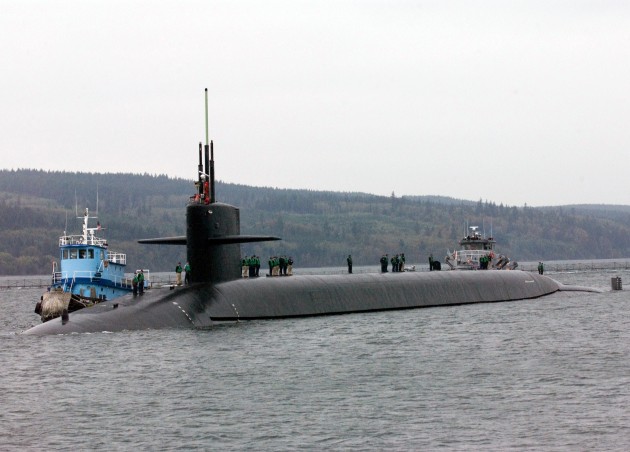Columbia Costs: Is It $100B OR $128B? Well, Yes. Read Kendall’s ADM Memo.
Posted on

Ballistic (nuclear) missile submarine USS Louisiana, SSBN-743
WASHINGTON: Replacing aging Ohio-class nuclear missile submarines could cost so much it busts the Navy budget. But how much? That gets complicated. The media’s been saying $128 billion. The Navy would prefer we say $100 billion. Both figures are right. The difference is inflation.
Last Wednesday, when Pentagon procurement chief Frank Kendall gave the go-ahead to start detailed design & engineering work (aka “Milestone B”) of the new Columbia-class submarine, we reported the cost would be “over $125 billion.” But this morning, when the Navy officially announced the Milestone B approval decision, it took the unusual step of prefacing the pro forma announcement with a short lesson on proper costing.

Frank Kendall
“The total acquisition cost of the COLUMBIA Class program is $100B in CY17$ (calendar year 2017 dollars),” wrote Capt. Thurraya Kent, a Navy spokeswoman. “Media report total acquisition cost as $128B. That figure is accurate but in TY$ (then-year dollars) so please ensure you specify for accuracy purposes.”
In other words, the program would cost $100 billion if you could somehow buy all of it today, paying 2017 prices. It costs $128 billion once you factor in future inflation. But inflation adds up dramatically for a program that started R&D (“Milestone A”) in 2011, delivers its first submarine in 2021, delivers the last boat in 2033, and then keeps the last sub in service through 2080. Predicting inflation over so many decades is invariably a matter of guesswork, and it’s especially hard in shipbuilding, which suffers inflation at a higher rate than the economy as a whole. And of course inflation-adjusted figures are larger, so they induce more sticker shock: The F-35 Joint Strike Fighter took heavy flak in 2011 after one estimate, in inflated future dollars, suggested it would cost over $1 trillion.
No wonder, then, the Pentagon would prefer to use today’s dollars, whose value we actually know for sure. But rather than update program estimates every single year — which would be the most accurate and intelligible way to convey the real cost to laymen — the Defense Department pegs each program’s estimated cost to a specific “baseline” year, typically the year of the Milestone B decision. Since different programs have different baseline years, and the dollar is worth (slightly) less every year, that means different programs are measured in dollars of different values. That practice makes an apples-to-apples comparison almost impossible — even if the estimates are accurate.
“It is standard practice and policy to align baseline dollars for the program’s Acquisition Program Baseline (APB) with the year of the milestone review. Accordingly, the cost estimates have been adjusted to Base Year 2017 (MS B),” Kent wrote. “The Acquisition (Decision) Memorandum is not releasable.”
Kendall’s Acquisition Decision Memorandum may not be releasable but it is leakable, and a copy is appended to this article. Incidentally, it estimates the overall cost of the program in then-year dollars, i.e. adjusted for future inflation. The total? $128 billion.
OHIO Replacement Program Milestone B Acquisition Decision Memorandum by BreakingDefense on Scribd
Subscribe to our newsletter
Promotions, new products and sales. Directly to your inbox.
